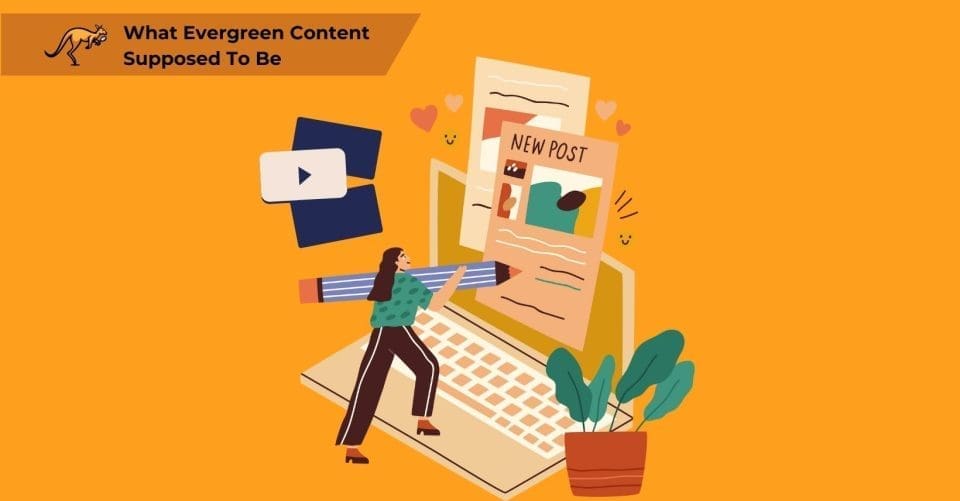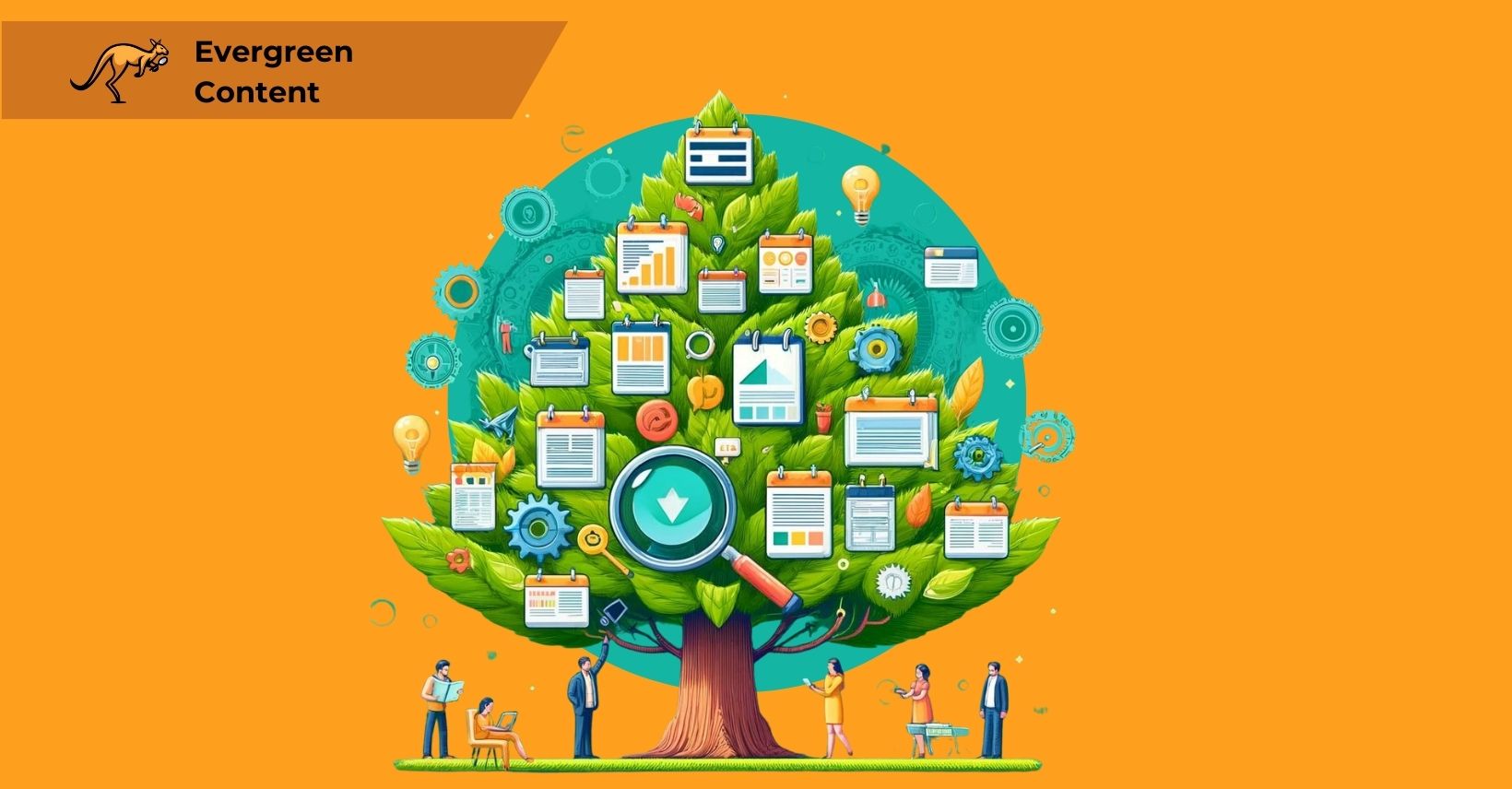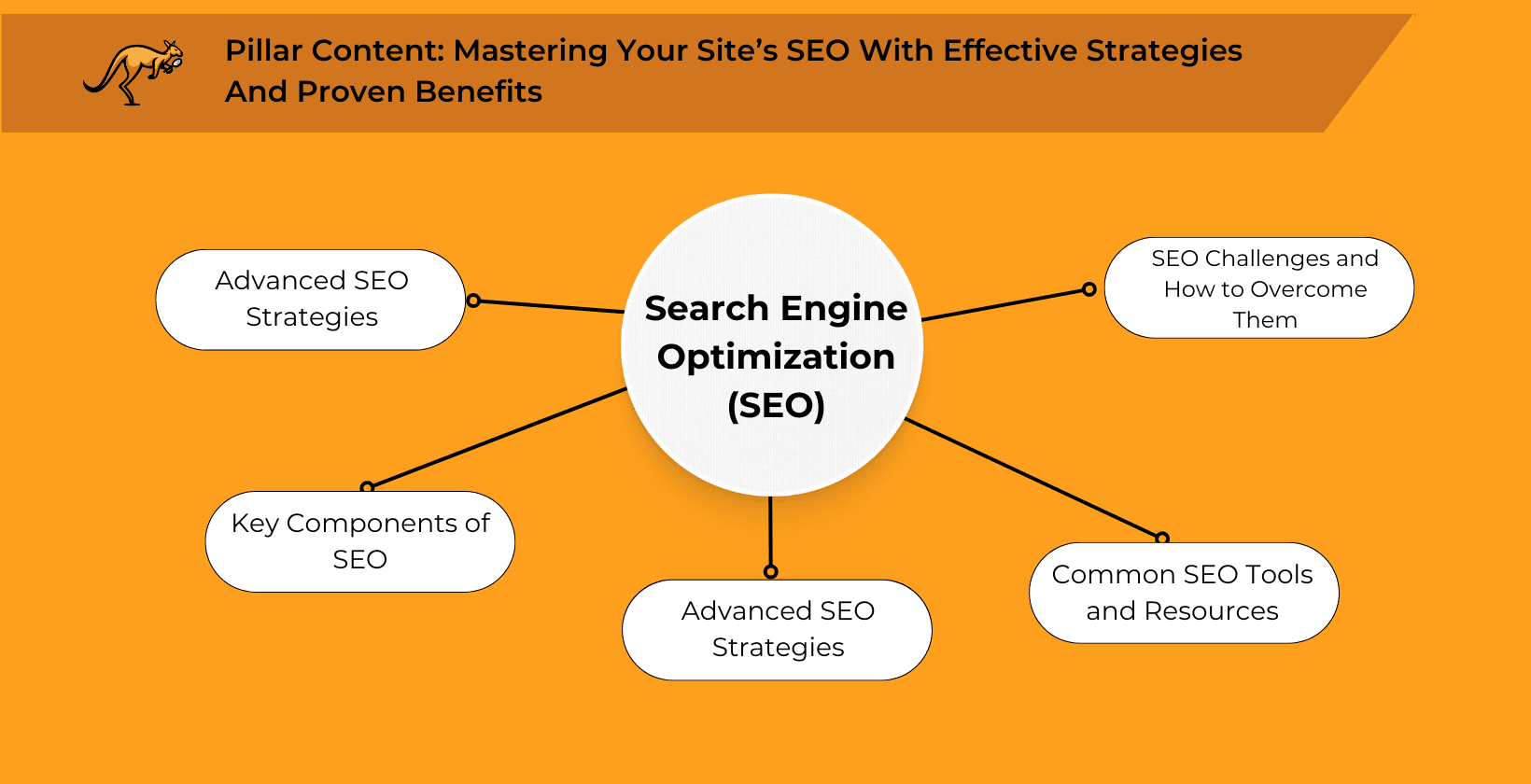Creating evergreen content is vital for building a website. While creating one-off content for promotions or SEO boosts is easy, evergreen content remains valuable. Typical web content eventually becomes obsolete, losing relevance or failing to attract traffic.
Even well-crafted articles may lose momentum after a few weeks. Despite the challenge, content specialists aim to create evergreen content.
This type of content consistently drives traffic and retains long-term value. But what makes content truly evergreen and consistently engaging for readers?
What is Evergreen Content Supposed to Be?

Named after evergreen trees, evergreen content is designed to attract as much attention as possible from an audience. This content stays up-to-date and relevant, passively generating traction over a long period.
Optimized for search marketing, evergreen articles remain fresh and valuable long after publication. They provide active value to readers, either through information or entertainment. List articles, tutorials, and product reviews are easy to make evergreen.
Tutorials, in particular, tend to stay relevant for extended periods. This leads us to explore some of the most enduring forms of such content.
Common Examples of Evergreen Content

Evergreen content includes reviews, tutorials, and lists. These articles stay relevant long after their original publication date, although this is not always guaranteed. For instance, a “how-to” article may maintain popularity as guides remain useful until they are outdated.
How-to posts often serve as evergreen content, but not always. A typical evergreen post attracts users repeatedly, making tutorials excellent examples. Longevity is crucial. Evergreen writing must be relevant and valuable over time, often focusing on important subjects.
Understanding the true value of evergreen articles can reveal how they consistently drive traffic and engagement.
The Benefits of Evergreen Articles
Evergreen content provides various benefits to any business that creates it. Although the specific value of this content may vary based on your business goals, its fundamental advantages are crucial, particularly for a content marketing strategy.
Despite its long-term success and value, many business owners initially fail to grasp its importance. If you haven’t been generating evergreen content ideas, here are some compelling reasons to begin.
SEO Benefits
Evergreen content provides some core benefits for search engine optimization. It tends to get more traffic and is also more likely to get links from other sites that want to use it as a reference or source.
Incoming links naturally boost your SEO, especially from major websites. This can turn this kind of content into an effective source of new links for your site.
Even beyond that, a successful page tends to perform better in SEO. Keeping your content relevant and accessible often means boosting the SEO anyway, which will positively impact your site.
Getting higher in search rankings is important for content marketing as a whole. Evergreen content is a good approach if you want to rank high.
Traffic
As you might expect, evergreen blog posts tend to draw in quite a lot of traffic. Since they are meant to retain relevancy for much longer than other content types, this traffic flow will continue for much longer, meaning you will always get more visitors.
This can be important since it allows you to direct more users to your site, both within and outside your target audience. A higher traffic volume usually means more conversions overall and dramatically increases brand awareness.
Suppose you focus on relevancy within a particular niche. In that case, you can easily attract relevant traffic to your site. This tends to mean more interested users, leading to a much higher chance of conversions with each new wave of visitors.
Building Relationships
While it is easy to overlook the idea of a relationship between a site and its users, building a relationship with your customers can be a difficult but worthwhile goal. Using evergreen content can make this easier for a few core reasons.
The most notable benefit is that this content lasts a long time. Certain kinds of content, such as tutorials or informational breakdowns, might even become a major part of how a person learns a hobby or refreshes their memory on how an important task should work.
This can lead to a reliance on your site’s information, helping you develop a simple relationship with them as they visit your site more and more.
If your site continues to provide useful information, this relationship may blossom into them becoming actual fans of your site. This can also massively increase the chance of conversions or them recommending your site and services to others they know.
Increased Value
While making your website more valuable to users does not change much for you directly, it can still make a big difference. Greater value usually means your site will be mentioned more often, spread around faster, and recommended in niche spaces.
A website that offers value to people within a certain audience has a good chance of becoming a popular option in that same audience.
Even if it is just because your tutorial articles are recommended often, this still means more visitors and a wider range of influence over that community.
Backlinks
Having evergreen content on your site can often lead to your site getting linked to by other platforms far more often. These backlinks can hold a lot of value for SEO, as mentioned above, meaning that it is easy to “snowball” your site’s search rankings larger and larger.
Good, long-lasting content gathers more links, which ranks your site higher. From there, your content becomes more visible, allowing more users to discover your evergreen content.
If handled correctly, evergreen content can slowly build up a solid backlink profile through content marketing. This means more value, better SEO, and increased organic traffic on relevant pages.
Greater Relevancy
While no content has a perpetual life, most evergreen content will last for quite a while. Suppose you choose the right subjects to turn into evergreen posts. In that case, you can retain relevancy within a particular community or niche for quite a long time.
Writing evergreen content relies heavily on using relevant information to your advantage. Suppose you stick to well-researched and properly checked information and convey it in a way your audience likes. In that case, you can stay relevant to their interests for a long time.
Relevance spreads brand awareness alongside greater overall SEO success, so pursuing relevancy can be a good idea if you want your business or site to remain well-known.
Brand Loyalty
If you can get customers to continually return to your site for the posts you create, then you might be able to instill brand loyalty in them. This customer loyalty can ensure that they always think about your business first if they ever need one of your services.
For example, a home improvement supplies business may create content about home improvement options. This can make them a major source of home improvement information while associating their brand with that niche.
This keeps traffic coming back and provides them with a connection to your products and services. This might increase the chance of them converting in the future, meaning you can secure more business from your audience without doing much extra work.
Authority
Creating evergreen content regularly can establish your brand as an authority in your niche. This boosts your online presence and gives you more influence. For example, consistently producing relevant content can make you a trusted source of information, attracting more traffic to your site. This authority allows you to guide users towards your products and services and even draw business away from competitors. Building this credibility is crucial, especially when considering the basics of creating evergreen content.
The Basics of Creating Evergreen Content
Crafting evergreen content can initially seem daunting since there are no guaranteed methods for evergreen marketing success. Evergreen material won’t just appear ready to use; you must create those evergreen posts yourself.
This task can be challenging initially, requiring understanding which articles will work as evergreen content. To achieve the desired results, focus on your target markets and the content they care about most.
Here’s what you need to do:
Research
Having examples of evergreen content is not enough—you need to do your research to develop a content strategy that will likely work.
Primary research should concern things like Google trends, topical articles in your particular niche, and the right keywords for each target audience you are aiming for.
It can also help to look into other successful evergreen posts to understand what audiences want. That way, you can create relevant content in the right style and tone for that audience.
Trending content comes from quality, relevance, and suitability to a given audience. If you want to create evergreen content, you need to understand what your audience wants and how you can capture their interest in the long term.
Uniqueness
If you want to capture audience interest, it helps produce content that offers something unique or otherwise hard to find. For example, a how-to article on a specific product might be one of the only articles of its type, so users will flock to it.
While you can succeed by creating content in a highly competitive niche, you must know that you are offering something useful. If multiple articles are available, most users will choose the one that appears highest in the search results.
Remember that uniqueness does not mean never-before-seen information. Instead, it might be something like a FAQ section that answers some important questions visitors might have or condensed how-to guides that can resolve a problem in only a few paragraphs.
High Points
“High Points” refer to stand-out elements that give your evergreen content a compelling reason for users to share, recommend, or frequently revisit it. These elements will differ depending on the content type.
For example, an entertaining article will have different high points than an instructional piece on using a specific product. Evergreen content gains value from segments that draw user interest, such as tutorials or key information sections that users repeatedly refer to.
When crafting evergreen content, focus on the parts that engage users most.
To ensure your content remains valuable over time, consider quality and consistency.
Creating Quality Evergreen Content
Producing high-quality, evergreen content involves more than just the basics. It’s about understanding your audience and crafting material that remains relevant. This means considering the type of content, how to keep it evergreen, and the factors influencing its longevity. While it may seem challenging, it concerns common sense and audience insight. Key elements include the subject matter, production methods, and longevity factors. With these in mind, you can maintain evergreen content that consistently engages your audience. There are many forms this content can take, each serving a unique purpose and audience need.
Types of Evergreen Content
Evergreen content ideas are popular because they consistently generate long-term traffic.
When creating evergreen content, you typically follow a set of proven ideas. While not all content can be forced to become evergreen, certain types have a higher chance of achieving this status.
Some of the most effective evergreen content types include how-to guides, listicles, and resource pages. As we explore these types of evergreen content, we will see how they can provide lasting value and attract continuous traffic.
Lists
Lists are an incredibly versatile way to build content that lasts a long time in your audience’s consciousness. Lists also tend to draw quite a lot of attention, especially if they focus on exactly what the user is looking for.
This all depends on the kind of list that you create, though. A blog post like “Top 10 Gutter Cleaning Tools” is specific but gives you a direct link to a niche audience and a place to promote whatever products you want (ideally those you sell).
On the other hand, there are clickbait lists. While these might attract a lot of traffic, they often do not retain it well. These lists do not provide any value or information; instead, they try to get the maximum number of clicks possible.
When creating a blog post list, include information and details that make the post worth reading. This will increase the chances of your content getting noticed.
Guides
Guides are a great way to create something evergreen. Guide content draws in a lot of attention from people who might need your expertise and remains relevant as long as the related product/service/technique exists.
This can allow you to quickly and easily gain attention and remain relevant simply by posting guides and how-tos online. Even a basic how-to article, as long as it is factually correct and well-written, can draw in traffic for multiple years.
Creating a stand-out guide—such as blog posts full of images or video demonstrations—can help elevate those articles above others. Of course, this all depends on the context of what you are creating a guide for, so use your judgment.
Informational Articles
An article combining relevant information into a single place can also become a great choice of evergreen content. Rather than making an ultimate guide to something, you can combine facts and statistics into a single space.
While this might not be as immediately successful as other options, it could still be continually relevant. For example, a US construction company might post blog articles about contraction laws across each US state.
Having all this information pulled together—and, ideally, properly fact-checked—can make a difference. You often see this in news articles: statistics make the article stay relevant long after it has been published.
Not only can this gain you more links than other options, but it might also lead to some major advantages in gaining interested traffic. If you write the article well, you might be able to nudge visitors into looking over your services or products.
Reviews
While it might sometimes be a bit odd for a business to review another business’ products, there are ways that you can get around this. If you want to create review content, it is important not to have it reflect on your business as a spiteful act.
For example, a construction company might review particular material types in certain contexts, and a cooking-focused site might review pre-packaged meals by major chains.
What matters here is creating relevant content that is a clear, genuine review of that particular thing. If you do this well, you can attract customers to your site and promote your products at the end of the review, potentially securing more conversions.
This content can be difficult to create, but reviews of something well-known are almost always guaranteed to bring in more traffic. Many reviews are considered evergreen articles because they are still relevant months after posting.
Other Posts
Almost any content can become evergreen under the right circumstances, so you can always experiment.
Some sites will try using video content, while others might create daily blog posts about something happening in that particular month. Anything with long-term relevancy potential could be turned into an evergreen article.
While some of the suggestions above are common examples, there is not a single “best” content marketing strategy, which also applies to evergreen content. Some will be easier to manage than others, but any post could become evergreen in the right context.
Topics and Keywords
Choosing the right topics and keywords for your evergreen content is important. Like any kind of marketing, you need to draw in an audience by appealing to their interests and goals.
This can seem tough at first, but if you have been doing other marketing, you most likely have a good idea of what they want. Using existing information about your audiences’ habits can be a great way to target them with evergreen articles.
Longevity
Ideally, you want to write an excellent post or article about something that will remain popular and relevant in the long term. This could be a particular subject, a process, or even a guide for using one specific piece of equipment.
The longer an article is relevant and wanted, the more likely it is to generate additional traffic and attention. For example, a beginner’s guide for a popular product can see constant search traffic until the product is no longer sold.
Business Relevancy
Make sure you are choosing topics relevant to your business, too. While irrelevant evergreen content will draw in traffic, it will not be for the right reasons, so they may read your blog posts without looking into the rest of your site.
Blog posts and articles connected to your services and products are more likely to generate conversions. They also open up more opportunities to advertise whatever you are selling naturally.
Unless you have no other option, it is a good idea to slow down and look through topics that connect to your business. That way, you can get a good idea of what might be worth targeting with your new content.
Audience Relevancy
Ensure you are hitting the right audiences with the right content, too. Your business will target specific audiences; you want evergreen content targeted at those niches.
Ensure you create content your audience will care about and want to engage with. If your content’s target markets do not match your site’s, there may not be much overlap, so users will not be as willing to convert to your site.
Be Date-Agnostic
Mentioning dates and years can be effective in attracting attention during that period. Still, updating content regularly or removing the date after a while is important.
Evergreen content, like an evergreen tree, will always be desirable. However, adding a date is like decorating a tree with Christmas ornaments – it is the same basic thing but targeted at one particular time.
Providing up-to-date information and no obvious hints of the article’s age can help since users will not be concerned that they are reading an article published two months ago.
Offer Resources
Offer something worthwhile. Most common evergreen formats allow for search-optimized content. Still, you also want to produce content that has some practical benefit.
While avoiding overly technical language or confusing masses of data your audience will not understand is important, you want to create something valuable.
The more value your evergreen content has, the more people will engage with it. This also increases the chance of sharing it on social media or linking to other sites.
All common types of evergreen content can create a page full of data and resources. Then, you can sit back and allow users to rely on your information.
Fads vs. Niches
Avoid chasing short-lived trends. Writing long articles with evergreen content that becomes irrelevant quickly can be frustrating and unsuccessful. Evergreen content should stay relevant for as long as possible.
Hyper-focusing on products that may soon become irrelevant is unwise unless their popularity is assured. Short-term fads and sudden pop culture shifts are better suited for social media marketing, where immediate impact is crucial. The gold standard for evergreen content is to ensure it remains popular for years.
Understanding the right tools and techniques is essential to ensure your content remains impactful and relevant.
Tools and Techniques
There are many ways to create evergreen content, but it’s simpler than you might think. Using the right tools for each situation is crucial for getting this content right. If you already use various marketing software and tools, leveraging them can help you gather more information and expand your content effectively. To maximize your efforts, it’s also beneficial to understand how search engines can aid in this process.
Tools for Search Engines
Most search platforms have monitoring tools that can help you track how well your evergreen content is doing, how high your website ranks, and the amount of traffic from those platforms.
If your main goal is to raise your search engine ranking, then it is important to use relevant tools to gain an edge. Standard industry practices are standard for a reason—they work.
Remember that keyword research tools can allow you to see what your audiences are generally looking for in Google searches, and you can gather search volume information to pick out the right keywords for your business needs.
Language
Language plays a crucial role in engaging your audience. Avoid overly technical terms or complex vocabulary unless targeting a specialized group. If detailed explanations are necessary, provide simplified breakdowns.
While in-depth articles can be beneficial, a beginner’s guide often attracts more readers due to its accessibility. For example, a clear, straightforward guide can draw more interest and keep readers returning.
Improving the reach and longevity of your content is key, and this is where strategic partnerships can make a difference.
How a Link-Building Agency Can Elevate Your Evergreen Content
A link-building agency can enhance your evergreen content by creating high-quality, relevant backlinks that boost your site’s authority and visibility. Securing links from reputable websites helps improve your search engine rankings, making your content more discoverable.
This increased visibility attracts steady organic traffic, keeping your content valuable and relevant long after publication. A link-building agency conducts keyword research to find trending and high-performing keywords and integrates them seamlessly into your content.
This strategic approach increases the reach of your content. It ensures it resonates with your target audience, driving engagement and fostering trust.
By continuously monitoring and updating your backlinks, the agency helps your content stay competitive, providing a solid foundation for long-term success. For these reasons, finding the right partner can make a significant difference.
This is where Searcharoo excels as your ideal partner for evergreen content creation.
Why Searcharoo is Your Ideal Partner for Evergreen Content Creation
Choosing Searcharoo for evergreen content creation means partnering with a team dedicated to boosting your online presence. Our expertise in SEO and link building ensures your content is optimized for visibility and engagement.
We build strong, authoritative links that enhance search engine rankings and drive high-quality traffic to your site. We keep your content relevant and impactful by staying updated on industry trends and algorithm changes.
Our personalized approach tailors strategies to your brand and audience, creating content that stands the test of time and delivers ongoing value. With Searcharoo, you’re equipped to produce enduring content that continually benefits your business.
Should You Create Evergreen Content?
Evergreen content is invaluable for social media marketing, SEO, and other marketing and promotional techniques.
While the common evergreen formats work best, there are countless ways to approach the idea: online marketing copy, guest post attempts, blog posts, articles published to an editorial calendar, or even up-to-date product reviews.
What matters most is taking your time and figuring out a strategy that suits your business and targets the right audience. For expert assistance with building citations, hop over here to explore our comprehensive citation-building service designed to enhance your online visibility and credibility.
Remember: evergreen content relies on both relevancy and user interest. You can create great stuff that drowns under a sea of more relevant content or something boring to read.
Like all marketing efforts, you must approach the idea of evergreen content with some common sense and a critical eye.



